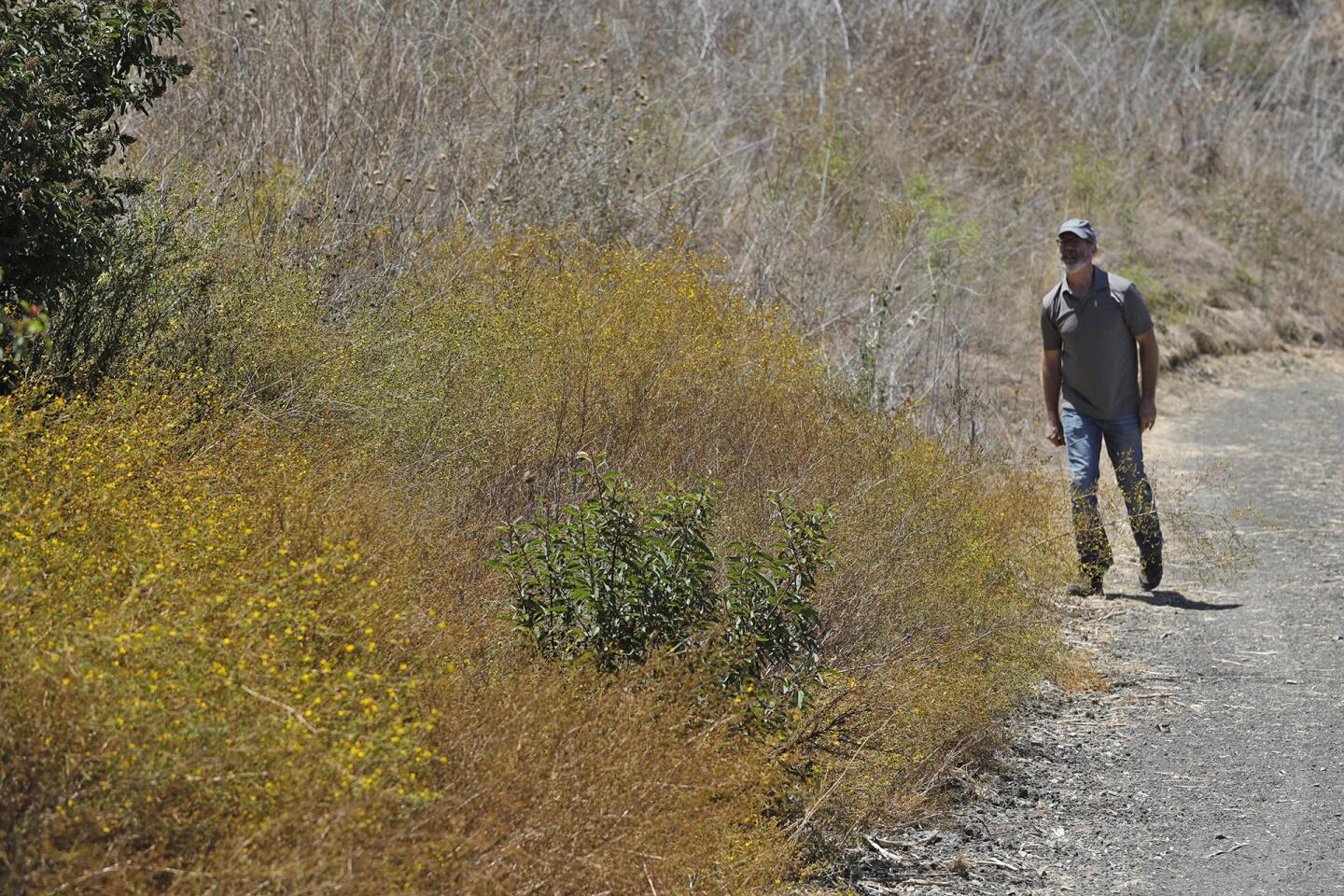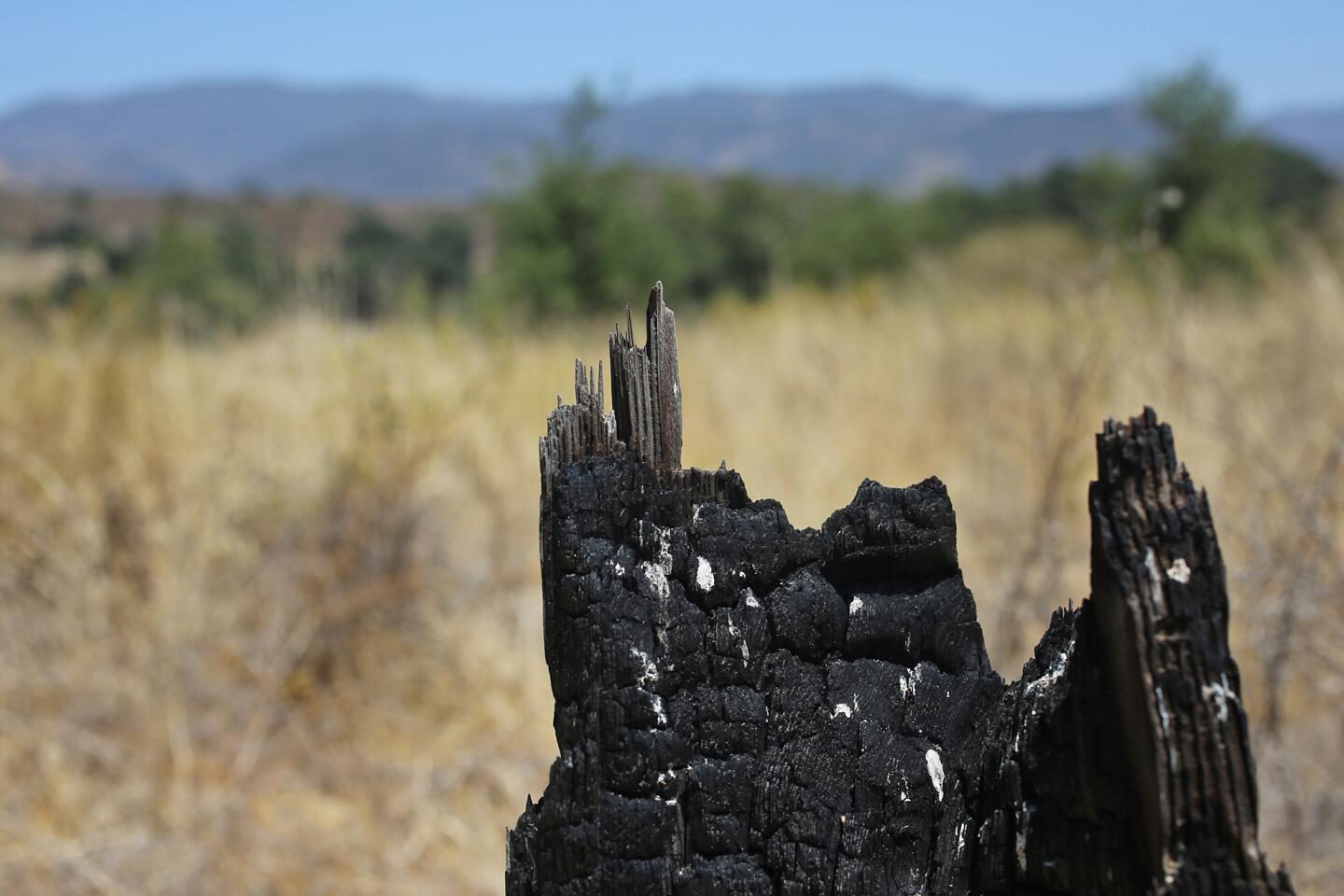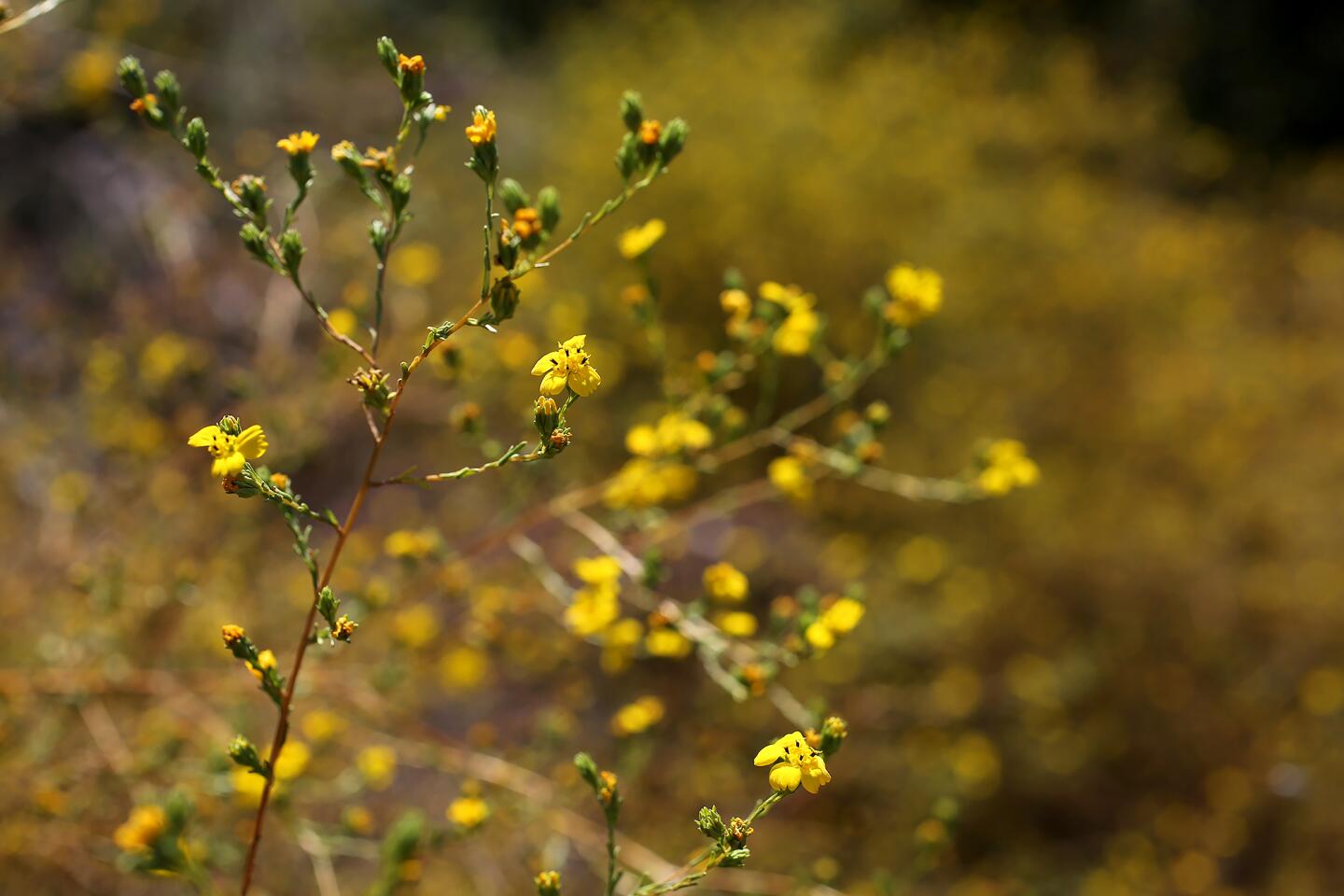âYou can just sense the life thatâs out thereâ: Important habitat restored by Irvine Ranch Conservancy
California gnatcatchers, coastal cactus wren and a host of other species may soon return in droves to an Irvine canyon that had been decimated by wildfires and hundreds of years of cattle grazing.
Bee Flat Canyon now has the habitat these species need after a decadelong restoration project by the Irvine Ranch Conservancy.
âI want to see these native species, be it plant or animal, thrive and endure in the way that they have in Southern California for centuries,â said Robert Freese, a project manager for the Irvine Ranch Conservancy. âMy hope is that they will continue to be here in another 200 to 300 years. Itâs really important that people see how California used to look before humans got here and altered it so severely.â
The 84-acre restoration of the 300-acre Bee Flat Canyon, which is located in OC Parksâ Limestone Canyon in Silverado, is the longest and most substantial project ever undertaken by the conservancy. The nonprofit, initially funded by Donald Bren, has managed open space in Orange County â primarily in Irvine and Newport Beach â through its 15-year history.
The project was done in partnership with the Orange County Transportation Authority as part of meeting the agencyâs mitigation requirements to offset the damage it does to the environment. The California Department of Fish and Wildlife and U.S. Fish and Wildlife Service recently deemed the project a success.
The restoration took years of effort from the conservancyâs small staff. In addition to the years of unchecked livestock grazing and fires, much of the vegetation had been overwhelmed by nonnative weeds.
The staff restored native grasslands, coastal sage scrub, oak woodland and chaparral. Only about 2% of the original native grasslands remain in the region, and coastal sage scrub supports many endangered species like the gnatcatcher.
The effort wasnât easy due to the complex geography of the area.
âItâs a pretty big, rugged area, so there were all sorts of challenges,â Freese said. âWe were in a historic drought for about five years since we started the project. We didnât have irrigation, so it was a challenge to get native vegetation established. A lot of times roads were washed out and we couldnât get in there during winter. Itâs been a fun project but itâs definitely had its challenges.â
To provide âbuffersâ to the restored land, the conservancy did a less intensive form of restoration, called target invasive control, by removing a handful of weed species they identified as a threat to the sustainability of the habitats.
The conservancy hopes that the habitat will attract larger numbers of animals including cactus wren, hawks, mountain lions, bobcats, gray foxes and reptiles like the orange-throated whiptail and horned lizards.
Attracting gnatcatcher populations back to the area is particularly important. The California gnatcatcher is a federally and state-listed endangered species, and much of the restoration work in Southern California is driven by its survival.
The conservancy will be managing and monitoring the land to see if the animals return. So far, Freese said they have seen more cactus wren than before. The conservancy will continue looking for new weed species and insects that could threaten the habitat.
âWe are still waiting on the California gnatcatcher to return,â Freese said. âThey have returned to some of our restoration sites, not Bee Flat Canyon. But we have certainly built good habitat for them, so I expect eventually they will show up too.â
The conservancy has restored about 250 acres of land so far and manages about 30,000 acres in Orange County. The conservancy is currently working on restoring other lands near Bee Flat Canyon and a riparian stream site in Silverado Canyon.
Itâs important work to conservationists like Freese.
âThese sites are really beautiful once they are restored â full of wildflowers and a diverse mix of shrubs,â Freese said. âYou can just sense the life thatâs out there.â
All the latest on Orange County from Orange County.
Get our free TimesOC newsletter.
You may occasionally receive promotional content from the Daily Pilot.













